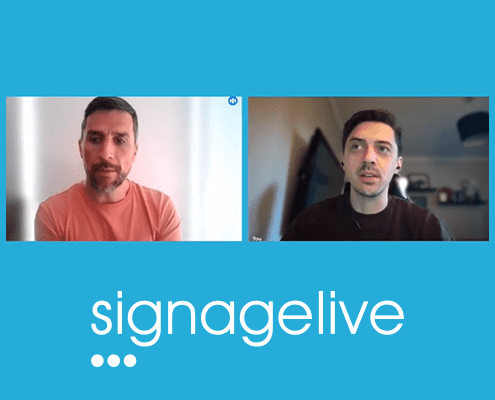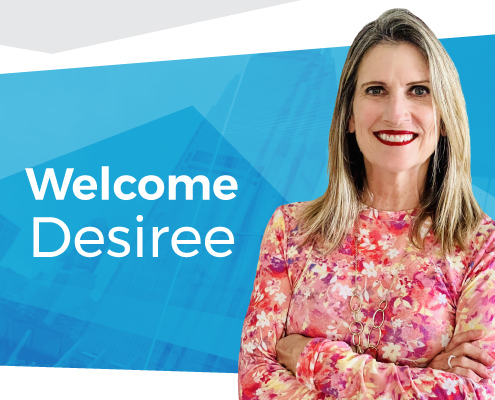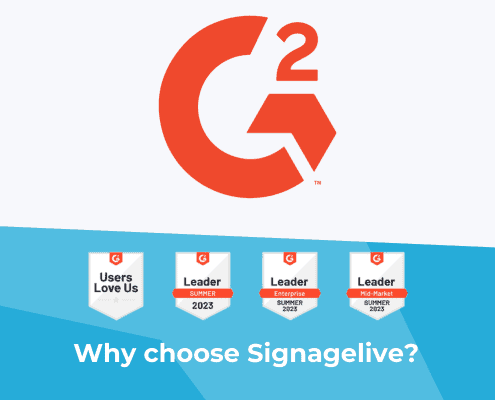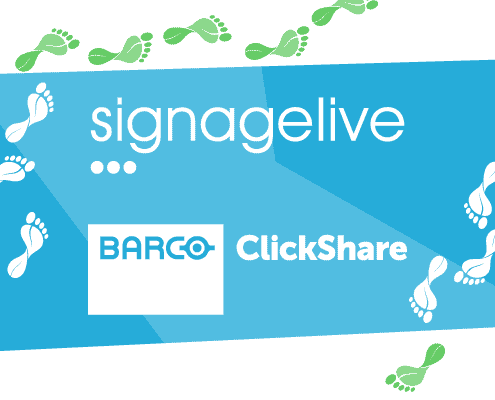“For the future of ANZ, it’s full steam ahead.”
Pat Pinto, new ANZ Head of Sales for Signagelive
From becoming an Australian national champion in basketball and Kyokushin Karate to a respected leader in the SaaS industry, Pat Pinto has had an illustrious career so far, acquiring a string of accolades to his name.
The accomplished athlete is now ready for his next challenge, intent on winning further sales and market share in his new role as Signagelive Head of Sales for Australia and New Zealand (ANZ).
We talk to Pat to find out more about the man, how his sporting background has shaped his career in the SaaS sector, and how he sees the future of Digital Signage in ANZ.
Q&A
Q: Pat, tell us a little about yourself.
Pat Pinto: I’ve got a couple of chapters in my life that people are interested in once they get to know a little bit more.
When I was younger, I played professional basketball. I came up through the ranks and won the national championships here when I was in the Australian Men’s National Under-18 Basketball Team. From there, that led to my best buddies in that team heading to America and playing over there, as well as in the professional league here.
I was fortunate to be one of the development players in the professional league here. I wasn’t anywhere near being a superstar, but I was in that world for a couple of years when I was eighteen, nineteen and twenty.
Basketball was ultimately put to the side though because being a pro was just another level obviously in terms of the commitment required.
Instead, I started practising martial arts, which I had always been interested in. It’s a totally different hat to put on because you’re in a team, but you’re not in a team, right? I wasn’t relying on my coach, putting me on the court, or this player, or that player not giving me the ball.
When it comes to martial arts, it’s all in your own hands. It’s absolutely all you – the amount of time and effort you want to put in is what you’re going to get back.
Q: So, what kind of martial arts do you practise?
PP: I’ve spent twenty-two years practising Kyokushin Karate, which is full contact karate. It’s known as the toughest discipline, because of the way it’s competed. You spar with competitors, performing defensive and offensive techniques, without wearing any protective equipment like shin pads, or gloves.
It’s described as semi-pro, because there’s no money in the arts. It’s for the love of the discipline. While it isn’t a professional combat sports, you have to prepare as a professional, or otherwise face multiple physical risks from your competitor’s body, head, and knee kicks etc. So, although we’re not seen as professional, we still train professionally.
For sixteen years, I competed, and for ten of those at senior level, where you attain your black belt and you compete in world tournaments. I was fortunate to compete in three world tournaments in Japan.
I fought all around the world and the highest credential is obviously representing your country. I was very lucky to do that in 2008, 2012, and 2016, and then, won a couple of national titles here in Australia, including that of Middleweight Champion, which was always, you know, high up there. In 2016, I hung up the gloves, or gi.
Q: Are you still involved in karate?
PP: Yes, but now my karate schools are my passion. You transition your fight career. Some just pack it up or some go to schools or “dojos”, as we call them. I am fortunate to have had my school since 2016-2017 in Melbourne, and I’ve produced a number of black belts as well as a bunch of other champions now, which is where my energy goes.
I’ve also been invited to a 50-man Kumite. There’s also a 100-man Kumite, which means you fight a hundred black belts in a row for a minute and a half each. That’s only been achieved by twenty-seven men and one or two females ever in its existence of maybe 30 years. Compared to that, the 50-man Kumite is, as they say, reasonable.
It’s still a marathon though. It’s still going to be a tough task, but I’ve got that in a month’s time. I was invited by my masters, peers, and teacher, and they put that to me just after Covid opened up and we had an opportunity.
So, I’ve been training pretty hard for that, and it’s a selfish side now, just focusing on my own training rather than having to worry too much about anything else.
Q: What about your early career in the world of work? How did that start out?
PP: I completed my accounting degree, straight out of university and worked as an accountant for seven or eight years. It was awesome to learn the ropes. I was more into sports finance. I’m a sports addict and in Melbourne, we have so much sport around us like tennis, cricket, and soccer, so we’re embedded in it.
However, accounting didn’t become my passion, as sitting down all day for a job just wasn’t for me. I figured that out, and luckily, after seven years, I got into sales through the pedigree of people that I knew in sport.
One of the co-owners of my old basketball team introduced Under Armour to Australia, one of the largest sporting brands in the world. No-one had heard of it back then, but through this connection, I became the brand’s national sales manager in 2008.
I was responsible for the sales management, but also the finance, so I got to play in both worlds, which really facilitated my development in sales. Over four or five years, I was able to start working with all the big retail chains and sporting brands.
Q: So how did you get into the SaaS industry?
PP: I was approached by a recruiter, who was looking for someone outside of SaaS. And I’m like, “What is SaaS? What is this world?!”.
The recruiter explained that they were looking for someone in sport and in retail for an eCommerce platform. This was a fresh, fresh time of e-commerce, and it was an SaaS platform that had come out in New Zealand. I took a punt and I thought, you know what, they need a leader in that space, not in technology, but someone else that can be their eyes and ears in terms of what the sports industry needs.
I worked with that platform for two to three years. It led to another chance. This time, the recruiter was looking to appoint someone to work for an SaaS platform that offered a content management system.
The recruiter pointed out that CMS solutions were already starting to go into big retail chains, which again, I was fortunate enough to know, as I had worked with their marketing teams. The business needed a fresh face to lead the team. I was appointed as sales director at the time, and we would end up acquiring numerous big sales accounts with everyone from BoostJuice to Bupa and TerryWhite Chemmart, which is a massive pharmaceutical chain.
Q: What did you do next?
PP: I stayed in the Digital Signage solutions, software space. Prior to Signagelive, I was also a Practice Lead, working for an ASX listed company, which was seeking to build a digital display/solution, and required the right expertise to help build it. So, that took me to another level and enabled me to explore that vertical more deeply and get in that rabbit hole as such.
Through this role, I met the CEO of Signagelive, Jason Cremins, because I appointed Signagelive as the preferred CMS platform for all our solutions.
For about five or six years, I worked closely with Signagelive, but when Covid hit, it was a bad time for employment and people weren’t hiring senior execs, so I took about a year off.
In Melbourne, we were the most locked down part of the world. You couldn’t even leave five kilometres from home, and we were restricted to one hour of exercise per day.
However, Jason and I continued to stay in touch, and it led me to this point, where I eventually joined the team.
Q: What were the reasons behind your decision to join Signagelive?
PP: Well, you know, what got me really excited was when I was engaging with Jason Cremins, our CEO, probably six months before I joined. There was an opportunity to join back then and I was tempted to, but I took another role just in the meantime.
What impressed me was the way Signagelive was so professional and always stood by their word and had such integrity as a service provider. I obviously saw that when I selected Signagelive to work with in my last role. However, what started to get my attention was how the brand continued to mature and grow, not only with its product offering, but also in terms of its market share and headcount.
What’s more, by the time I was asked to come on board again, the world had changed and the way people were communicating was being turned on its head. I could see that the demand for Digital Signage software solutions wasn’t going to slow down. The industry’s growth really accelerated. Now, if you’re not part of the conversation about Digital Signage across the verticals we cover, then something’s missing, you know?
Another key factor to me taking the role was being able to be a part of all the various verticals and channels that we touch. We’re not just working in Quick Service Restaurants (QSRs). This is one of our biggest wheels, but we’re also working in corporate, hospitality, government and education. You can extend our products and services across any vertical, and not just to sell into, but also to develop and grow.
This takes me to the third and most important reason why I wanted to join Signagelive and that’s because it’s a real software company. Jason and the team have built this continuous software development angle that major clients depend on. The platform just continues to evolve, mature and grow. We’re already so experienced in this field, and even during Covid, people were desperate to get their Digital Signage prepared for when things opened up.
Q: How is the Digital Signage market going in ANZ?
PP: It’s an exciting time to come on board and be a part of the industry. If you think we’re going at a full-on pace, just look at our partners and resellers. They are what has helped the growth of ANZ – that and the previous work done by my predecessor, Nick Curulli, and the team, because those partners and resellers have grown with us. This kind of growth comes from confidence, reassurance and trust, which are paramount here in ANZ, you know? These are integral to building relationships, and Signagelive just continues to tick those boxes.
There’s such a reliance on our platform, with tens of thousands of sites across Australia. We’re working in the capital and major cities across main streets and shopping centres, and we haven’t even begun to scratch the surface.
Our resellers and partners are growing their teams, their niches and technologies, moving quickly with all the other brands they work with. It’s like “wow”, you know, “get on board!” This is where it’s all going, and we’re the heart of it.
To elaborate on the analogy, our partners and resellers have all the other organs and limbs, but at the end of the day, we’re the beating heart that keeps the body functioning. If your heart’s no good, you’re no good. I feel that’s a big part of the conversation that gets missed in Digital Signage – the software system.
Q: Do you think that will change? Are people starting to realise the important role of software?
PP: You know, we just had a massive cyber-attack here in Australia with a telecommunications company. It was a big scare for ten million customers. Nearly half of Australia got affected by it, which I think has started to show just how integral software is to the technology we rely on day-to-day. CMS solutions now control thousands of screens across the ANZ region, which is why investing in secure software like Signagelive is such an important component of Digital Signage.
Q: How do you see the future of Signagelive in ANZ?
PP: For the future of ANZ, it’s full steam ahead. You know a lot of work, time and energy has been put in prior to me joining the team, and I have got to honour and respect that. Being the face of Signagelive here in ANZ means a lot to me. I take that seriously and hope to take the business to another level for Jason and the team, because Signagelive has given me a great opportunity. I feel I’m an expert in this field, so I take a lot of pride in my work and the way I conduct myself.
With that, you know, you can talk the talk, but you have to walk the walk. I feel that only three months in, so much has happened since I started. So much has happened. If new relationships, partners and opportunities have already started to develop in just three months, then it’s onwards and upwards from here, I say.





You must be logged in to post a comment.